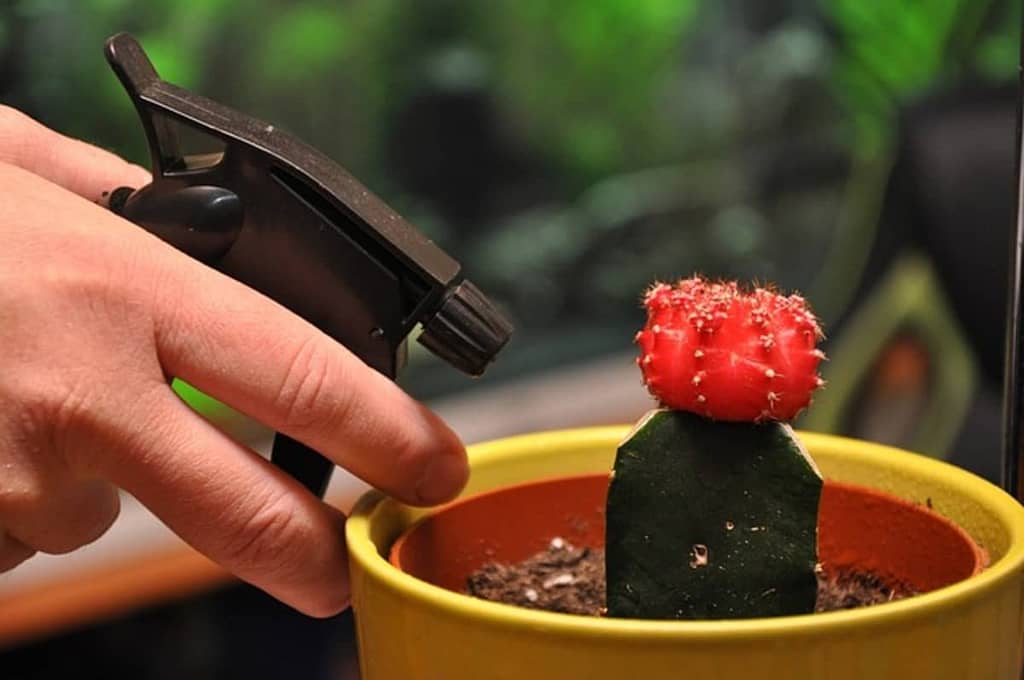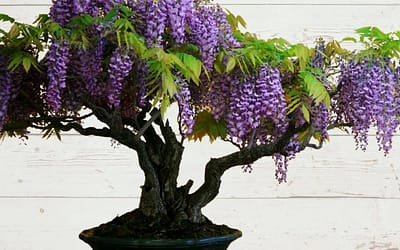Foliar feeds help to boost your plants’ nutritional intake. Home gardeners have access to a variety of foliar spray options, making it easy to find a recipe or solution that fits your needs. Keep reading to learn more about how foliar sprays can help maintain the health of your plants
What are Foliar Feeds?

Foliar feeds have become popular for quickly and effectively nourishing plants. This technique involves applying a liquid fertilizer directly onto a plant’s leaves, allowing essential nutrients to be absorbed through the leaf surfaces.
Here’s how it works: leaves absorb these nutrients via tiny openings called stomata, as well as through the epidermis, or the surface layer of the leaf. While stomata tend to absorb nutrients faster, the epidermis also plays a vital role in the overall absorption process.
Interestingly, some plants can even absorb nutrients through their bark, showing just how adaptable they are in taking up what they need. In the past, there was concern that foliar feeding might harm certain plants, particularly tomatoes, which seemed sensitive to the practice. However, with improved techniques and formulations, foliar feeding has become a trusted and effective part of plant care.
Gardeners and farmers now rely on foliar feeding to address nutrient deficiencies, support plant health, and boost growth, especially during times when soil uptake might be limited. It’s a fast-track method that can give plants the quick nutrient boost they need to thrive!
Types of Foliar Feeds
When it comes to foliar feeding, there’s a fantastic variety of options to consider. Most foliar feeds come in either water-soluble powders or ready-to-use liquid formulas, making it easy to find a product that fits your gardening style.
If you’re purchasing a foliar feed, just check that it’s designed for foliar application, as some fertilizers are specifically formulated for soil use only.
One thing to keep in mind: foliar sprays are generally more diluted than soil-applied fertilizers. This lower concentration helps prevent any potential leaf burn and makes it easier for the plant to absorb nutrients through its leaves.
Following the instructions carefully ensures your plants get the right amount of nourishment without any risk.
Natural Foliar Feeds
For those who love a more natural approach to plant care, homemade foliar feeds are a fantastic option. Using ingredients like kelp, compost tea, herbal tea, weed tea, and fish emulsion, you can create nutrient-rich foliar feeds that are both eco-friendly and effective.
One popular choice is comfrey tea, known for its high levels of potash and nitrogen—two nutrients plants crave.
Here’s an easy recipe for comfrey foliar spray:
1.) Collect fresh comfrey leaves and add them to the blender until it is nearly filled.
2.) Pour water into the blender, filling it until it reaches about 2 inches (5 cm) from the top edge.
3.) Blend until the leaves are thoroughly dissolved, creating a deep green liquid.
To use as a foliar spray, dilute one part of comfrey tea with ten parts water and spray directly onto your plants’ leaves.
This natural blend can give your plants a gentle yet powerful nutrient boost, promoting strong growth and resilience. Plus, making your own foliar spray is a satisfying way to repurpose garden greens into a nourishing treat for your plants!
How to Use Foliar Feeds?

To maximize the benefits of foliar feeding, timing, and technique are key. For best results, apply foliar feed in the early morning when the air is cool and plants are primed to absorb moisture.
Spray the leaves generously until you see a gentle drip from the edges—this indicates they’ve had a good dose. Adding a small amount of insecticidal soap or horticultural oil to the mixture can help it stick better to the leaves, ensuring nutrients are fully absorbed.
Remember to spray the undersides of the leaves as well, where many stomata (tiny openings) are located, allowing for efficient nutrient intake. Foliar feeding is an excellent way to provide a quick nutrient boost, especially for plants that are stressed or facing nutrient deficiencies.
However, consider it a short-term solution; the best long-term approach is to enrich your soil with plenty of organic matter. A nutrient-rich soil base supports healthy, resilient plants, making them less reliant on quick fixes and foliar applications over time.
Advantages of Using Foliar Feeds

Efficient Feeding
Soil fertilization is often inefficient, with only 5-15% of main nutrients and even less of trace nutrients reaching plants. This is due to factors like soil acidity, texture, nutrient imbalances, and weather conditions. To overcome these limitations, foliar feeds offer a more direct and efficient method of nutrient delivery to plants.
Root Growth
Foliar feeds enhance root growth, leading to increased water and nutrient absorption. This optimized uptake allows plants to better utilize soil reserves and fertilizers, resulting in balanced nutrition and improved crop yields.
Compensates Poor Root Function
Poor root function, caused by factors like asphyxiation, infections, compaction, diseases, and high salinity, can severely limit nutrient uptake. Foliar fertilization, which bypasses the roots, provides a direct nutrient supply to plants, enabling them to grow, recover, and thrive despite root limitations.
Dealing with Common Deficiencies
Inefficient soil fertilization can lead to nutrient deficiencies in plants. Foliar applications deliver nutrients directly to leaves, which quickly absorb them, supplying both micro and macronutrients. This method prevents deficiencies, promotes healthy growth, and addresses nutrient issues swiftly, improving photosynthesis and yield
Controlling Crop Growth
Foliar fertilization allows precise control over plant growth and development. By adjusting the nutrient balance in foliar applications, we can stimulate or inhibit growth as needed.
For instance, nitrogen-rich products can boost growth, while potassium-rich products can slow growth and promote fruit development. Additionally, the targeted application of specific elements, such as boron, can stimulate flowering. This level of control empowers growers to optimize crop performance and quality.
Other Advantages

Increases Plant Resistance
Well-nourished plants are healthier, stronger, and more resistant to diseases. Foliar applications of specific nutrients like calcium, copper, and silicon can further enhance plant defense mechanisms. Additionally, foliar fertilization can accelerate recovery from diseases and pest attacks by providing essential nutrients.
Improves Yield Quality
Foliar fertilization ensures balanced plant nutrition by providing essential nutrients at the right time, regardless of soil conditions. This prevents nutrient imbalances, such as excessive nitrogen, phosphorus-induced zinc deficiency, or boron deficiency, which can negatively impact fruit quality and yield.
Calcium, while often present in sufficient quantities in the soil, may not reach the fruits effectively. Foliar feeds of calcium chelate can increase calcium concentration in the plant’s sap, improving fruit quality.
Saving Time and Money
Foliar fertilizers containing well-chelated trace elements are compatible for mixing with many standard pesticides. This allows for efficient, combined applications, saving time and resources. Always consult the mixability list with experts to ensure compatibility. By combining nutrient applications with pesticide treatments, you can optimize crop nutrition and protection.
Foliar fertilization reduces the need for soil-based fertilizers, saving costs. By optimizing nutrient delivery, you can minimize fertilizer inputs and improve overall crop management efficiency.
Eco Friendly
Stricter environmental regulations limit soil fertilizer use, impacting yields and potential subsidies. Foliar fertilization offers a solution by providing targeted nutrient delivery, ensuring optimal plant health and productivity while complying with regulations. Foliar feeds ensure you meet the limits without sacrificing yield or income, maintaining eligibility for European subsidy support.
Limitations of Foliar Feeds
While foliar feeding offers numerous benefits, it also has certain limitations:
Limited Nutrient Uptake
Leaves have a limited capacity to absorb nutrients, especially macronutrients like nitrogen, phosphorus, and potassium.
Excessive application can lead to nutrient burn or other phytotoxicity issues.
Weather Dependence
Effective uptake depends on optimal weather conditions, including temperature, humidity, and wind speed.
Adverse weather conditions can reduce nutrient absorption and increase the risk of nutrient loss.
Timing and Frequency
Precise timing and frequency of applications are crucial for optimal results.
Improper timing can lead to reduced efficacy or even damage to the plant.
Cost
Foliar feeding can be more expensive than soil-applied fertilizers, especially for macronutrients.
Frequent applications may increase labor and material costs.
Environmental Impact
Improper application can lead to nutrient runoff and potential water pollution.
Drift and volatilization of nutrients can impact nearby ecosystems.
Technical Expertise
Effective foliar feeding requires knowledge of plant physiology, nutrient requirements, and application techniques.
Incorrect application can lead to reduced efficacy and potential harm to the crop.
Best Practices

Helena.Chorzewska, New agriculture 3, CC BY 4.0
To maximize the benefits of foliar feeding, it’s essential to consider to implement best practices, such as:
Targeted Nutrient Application: Apply specific nutrients based on plant needs and soil analysis.
Optimal Timing: Apply nutrients during periods of active growth and uptake.
Proper Formulation and Concentration: Use high-quality, water-soluble fertilizers at recommended rates.
Favorable Weather Conditions: Avoid application during extreme weather conditions.
Adequate Equipment and Calibration: Ensure accurate and efficient application.
Regular Monitoring and Adjustment: Monitor plant nutrient status and adjust application strategies as needed.
By carefully considering these factors, growers can effectively utilize foliar feeding to enhance crop productivity and quality.
Common Mistakes to Avoid When Using Foliar Feeds
To protect your plants, avoid foliar spraying under the following conditions:
High Temperatures and Lighting
1 The combination of heat and moisture from foliar sprays can damage or burn plant leaves.
2 Avoid spraying when temperatures exceed 75°F (24°C) or when lights are on.
Flowering Stage
Foliar sprays can increase humidity, which may negatively impact flowering and pollination.
Dilution is Key
1 Always adhere to the recommended dilution rates on the product label.
2 In some cases, over-dilution can be safer than under-dilution.
By following these guidelines, you can ensure the safe and effective use of foliar sprays for your plants.
Frequently Asked Questions
Jack’s Classic Blossom Booster: A balanced fertilizer for enhanced flowering and fruiting.
Advanced Nutrients Sensi Cal+Mag: Delivers essential calcium and magnesium for robust cell walls and plant health.
Dr. Earth Liquid Fertilizer: An organic, all-purpose formula that nourishes plants and enriches soil.
Bonide Liquid Kelp: A natural growth stimulant promoting root development and overall plant vitality.
Choose a foliar feed that matches your plants’ specific needs.
Optimal foliar fertilizers have a pH range of 6.2-7.0. Acidic sprays support the production stage, while alkaline sprays aid early growth
The optimal time to apply foliar feed is early morning, though late afternoon is also suitable. This timing helps to avoid the heat of the day, which can cause the solution to evaporate too quickly and reduce its effectiveness.
Foliar feeding can take effect within 48 hours, as the leaves directly absorb the nutrients. This method bypasses the soil and root system, allowing for faster nutrient uptake. Visible improvements like better leaf color, increased vigor, and enhanced fruit or flower production can be seen within a few days
In a glass jar, mix your chosen plant material (leaves or fruit) with organic brown sugar. Use a 3:2 ratio of plant material to sugar for leaves, or a 1:1 ratio for fruit. Cover the mixture with an additional layer of sugar, and then weigh it down with a stone or a glass filled with water to initiate the fermentation process.
Curious Contemplations
Growing Bunching Onions: A Simple Guide
Summer Savory: The Versatile Herb to grow in your garden




